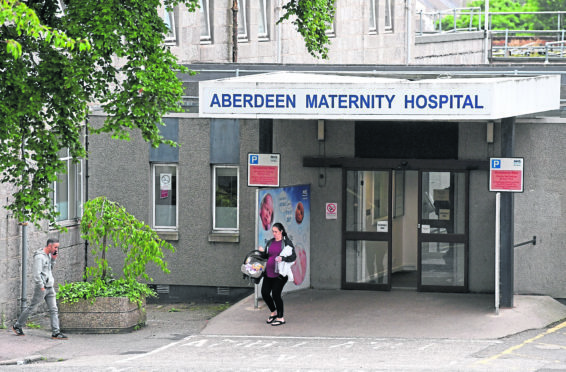A north-east health board has drafted in dedicated immunisation specialists to help protect babies after vaccination rates plummeted.
NHS Grampian has the lowest vaccination rate in mainland Scotland, closely followed by NHS Highland.
Hundreds of children under one are missing their jags to protect against meningitis, whooping cough, polio and rotavirus.
And last night, NHS Grampian warned that these youngsters were putting the wider population at risk.
The average percentage of babies under 12 months receiving their jabs in Aberdeen, Aberdeenshire and Moray during the last recording period in March was 94.2%. In the Highlands, the average percentage was 94.5%.
The number of infants being vaccinated has meningitis, polio and rotavirus, meanwhile, has dipped even lower across Grampian, dropping from between 97% and 98% in March 2012 to as low as 91.7% in March last year.
The highest rates were recorded in the Borders and Lanarkshire, at 97.4% and 97% respectively.
A spokesman for NHS Highland said the immunisation rates were closely monitored for all age groups, and added: “Immunisation delivery models in NHS Highland are currently being reviewed in line with Scottish Government policy. This is a national undertaking and not in relation to current immunisation rates.”
Earlier this month, an NHS Grampian report revealed infant vaccination was lower in Aberdeen than the rest of Grampian, and that without hitting the 95% target, an “increasing pool of unvaccinated children” could carry a risk to the wider population due to a drop in “herd immunity” across the region.
Last night, a spokeswoman for the health board said: “Infant immunisation is crucial in helping to protect our youngest patients from serious, infectious diseases.
“Historically, Grampian has had good immunisation levels among children under 12 months but unfortunately this figure has begun to drop over the last year in some places.
“While immunisation levels in Moray and Aberdeenshire are acceptable, the number of children who have not had vaccines in Aberdeen City is concerning.
“Aberdeen City Integration Joint Board (IJB) and the health protection team are working with practices to explore and address underlying reasons for the low uptake in the city.
“Two additional dedicated immunisation nurses have been employed to help improve uptake of vaccination among children.”
NHS Grampian is also taking part in the Scotland-wide Vaccination Transformation Programme (VTP).
Health chiefs hope it will lead to a “modernisation of the roles of those involved in delivering vaccinations” and change immunisation into a more region-based service, rather than being based in GP practices.
She added: “Significant changes are being made to the way vaccination services are organised as a result of the national VTP.
“This will see the responsibility for delivery of the immunisation programme move away from GPs and into a dedicated Grampian-wide service.”
Jamie Weir, a retired NHS Grampian board member and spokesman for the patient care group PACT, said the drop in babies getting jabs could be due to a lack of education about the importance of vaccinations.
He said: “It’s very important for children under 12 months old to have immunisation, and whatever programme is in place, the most important thing is a good take-up rate.
“And if the health board is looking to change how the immunisation programme is delivered, whatever change is put in place must be monitored carefully to make sure it’s successful.
“There could be several causes behind this drop in vaccinations.
“Firstly it could be a lack of staff, such as nurses and GPs, and service provision in GP practices.
“The other reason is the vaccination programme as it currently stands does depend to a certain extent on the socio-economic backgrounds of the patients involved.
“More deprived areas tend to show lower uptake of vaccinations, and unfortunately what can sometimes happen is attitudes develop that if individual’s friends and family choose not to get their children vaccinated, that idea can spread throughout communities.
“This can be addressed by an education programme by the health board, and the resources to make it work properly.
“You need to have a certain immunisation level in a population to stop diseases spreading, and that has to be a high percentage otherwise you get resistances developing and sporadic areas of disease.
“But it seems that NHS Grampian is taking the issue on board, and that should be applauded – but any changes must be monitored carefully, and it has to go alongside education about the importance of vaccination.”
